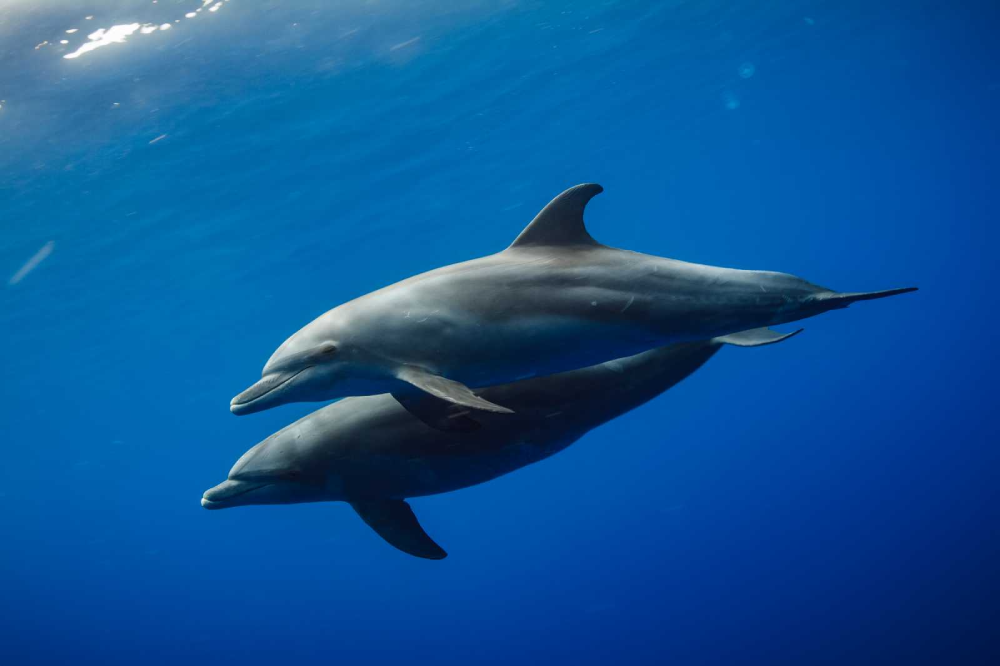In the vast expanse of our oceans, there exists a creature that captures the imagination like no other—the Bottlenose Dolphin. With its playful antics, remarkable intelligence, and also intricate social structures, this cetacean species stands as a testament to the wonders of marine life. In this article, we delve into the fascinating world of the Bottlenose Dolphin, exploring its biology, behavior, habitat, and the complex relationship it shares with humanity.
Anatomy and Physiology
The Bottlenose Dolphin, scientifically known as Tursiops truncatus, boasts a sleek and streamlined body perfectly adapted for life in the water. Its most distinctive feature is, of course, its bulbous forehead, from which it derives its name. This melon serves several functions, including echolocation, communication, and even thermoregulation. Beneath the surface, a Bottlenose Dolphin’s body is adorned with a smooth, rubbery skin, which aids in reducing drag as it effortlessly glides through the water.
These marine mammals possess a remarkable array of senses, finely tuned for their aquatic environment. Their eyesight is acute, allowing them to see both above and below the waterline. However, it is their echolocation abilities that truly set them apart. By emitting clicks and interpreting the returning echoes, Bottlenose Dolphins can navigate murky waters, locate prey, and communicate with one another over vast distances.

Behavior and Communication
One of the most captivating aspects of Bottlenose Dolphins is their complex social behavior. They are highly social animals, forming tight-knit groups known as pods, which can consist of anywhere from a few individuals to several dozen. Within these pods, individuals forge strong bonds, engaging in cooperative behaviors such as hunting, playing, and caring for offspring.
Communication lies at the heart of dolphin society, with these intelligent creatures utilizing a sophisticated system of clicks, whistles, and body language to convey messages. Each dolphin develops its own unique signature whistle, akin to a name, which it uses to identify itself to others within the pod. This intricate communication network facilitates coordination during hunting expeditions, reinforces social bonds, and enables the transmission of cultural knowledge across generations.
Habitat and Distribution
Bottlenose Dolphins are found in a wide range of marine habitats, from coastal waters to open oceans, and even estuarine environments. They are highly adaptable creatures, capable of thriving in diverse ecosystems, from the frigid waters of the North Atlantic to the tropical seas of the Caribbean.
Despite their global distribution, Bottlenose Dolphins face numerous threats to their survival. Habitat degradation, pollution, climate change, and entanglement in fishing gear are among the greatest challenges they confront. Conservation efforts aimed at protecting their habitats, reducing human impacts, and promoting responsible ecotourism are crucial for ensuring the long-term survival of this iconic species.
Interactions with Humans
Throughout history, Bottlenose Dolphins have captured the hearts and minds of humans, inspiring awe, reverence, and even spiritual significance in various cultures. They feature prominently in folklore, mythology, and art, serving as symbols of intelligence, freedom, and harmony with nature.
In modern times, interactions between Bottlenose Dolphins and humans have become increasingly common, often taking the form of dolphin-watching tours, swim-with-dolphins programs, and marine parks. While these encounters can provide valuable opportunities for education and conservation awareness, they also raise ethical concerns regarding the welfare and autonomy of the animals involved.
Conclusion
In conclusion, in the vast tapestry of marine life, the Bottlenose Dolphin stands as a shining example of nature’s ingenuity and beauty. From its sleek physique to its intricate social dynamics, this remarkable cetacean species continues to captivate scientists and enthusiasts alike. So, as stewards of the oceans, it is our collective responsibility to safeguard the habitats and ensure the well-being of these intelligent and majestic creatures for generations to come.









